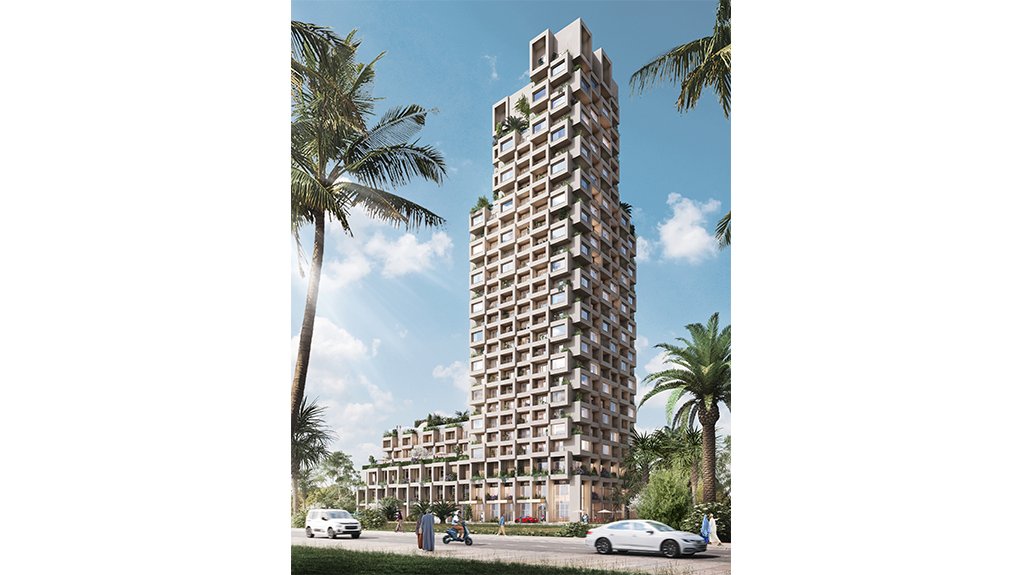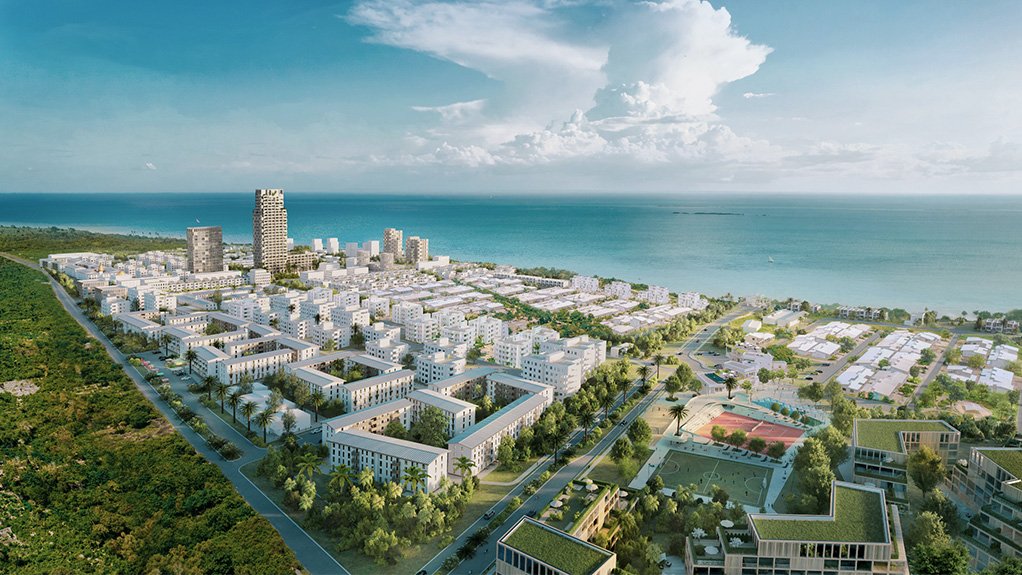German-led engineering firm CPS is planning to build the highest green building in the world, a 28-storey apartment tower designed using hybrid timber technology, in Fumba Town.
The design of the mixed-use apartment and commercial building is a new ecosystem for the future of living, says architect Leander Moons.
The building, named Burj Zanzibar from the Arabic word for tower, is designed to reach 96 m in height and will be a “vertical green village”.
The residential tower will have 266 residences in a beehive style. Categorised as a strategic investment and fully supported by the Zanzibar government, the growing eco-town of Fumba Town is near the capital and foreigners are allowed to buy stretches along a 1.5 km seashore on the south-west coast.
“Burj Zanzibar will be the highlight and natural continuation of our efforts to provide sustainable housing in Africa, thereby empowering local employment and businesses,” says CPS CEO Sebastian Dietzold.
Further, Burj Zanzibar is planned as a hybrid timber tower. A steel-reinforced concrete core is designed to meet all required fire and life safety standards. The project is to be executed by a consortium of specialists from Switzerland, Austria, Germany, South Africa, Tanzania and the US.
Green roof gardens and planted balconies further reduce the carbon footprint of the building.
“Panorama windows, closed-in green loggias and a modular layout will enhance the green nature of the tower and allow for flexible apartment floor plans, tailor-made for any cultural preferences,” explains Moons.
Residents can have their outdoor garden even on the top floor, he adds.
“Burj Zanzibar will be a widely visible new landmark for Zanzibar and beyond, not only because of its appearance but because of its construction method,” Moons says.
Timber technology is currently enjoying a renaissance because of its environmental benefits and longevity. One cubic metre of wood binds half a ton of carbon dioxide. New timber products such as cross-laminated timber and glulam are considered the building material of the future, he notes.
Set to promote locally available wood as a building material, Tanzania and its vast land resources for agroforestry would also benefit from the ambitious green megatower, says CPS.
A large forest development in central Tanzania, near Iringa, already covers twice the size of New York. “An enlarged forest industry could create hundreds of thousands of jobs in the East African country,” said Dietzold.
The tower represents a young, vibrant and sustainable lifestyle. The building allocates a mix of studio, one- and two-bedroom apartments and deluxe penthouses. The tower stands on a terraced podium with shared and private gardens, shops and a common pool.
Once realised, Burj Zanzibar will be the highest timber building in the world and Africa’s first high-rise ever in this innovative technology. Recently, the 86.6-m Ascent Tower in Milwaukee, in the US, was certified as the world's tallest timber hybrid building by the Council on Tall Buildings and Urban Habitat.
“As a global architectural highlight, the Burj Zanzibar will be setting a new benchmark of building in the twenty-first century,” Dietzold says.
Edited by: Chanel de Bruyn
Creamer Media Senior Deputy Editor Online
EMAIL THIS ARTICLE SAVE THIS ARTICLE
ARTICLE ENQUIRY
To subscribe email subscriptions@creamermedia.co.za or click here
To advertise email advertising@creamermedia.co.za or click here















